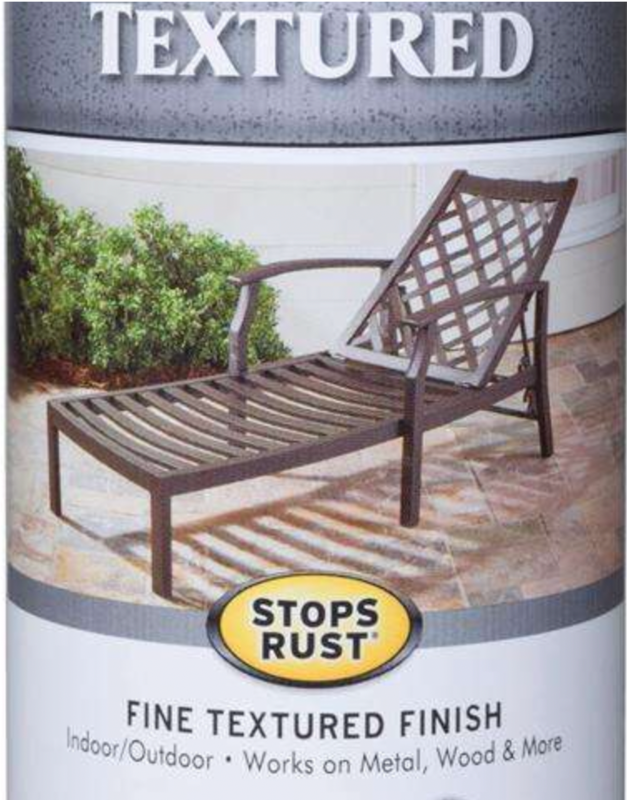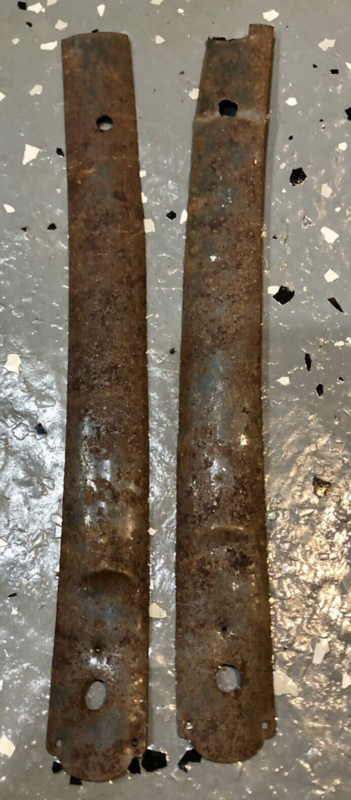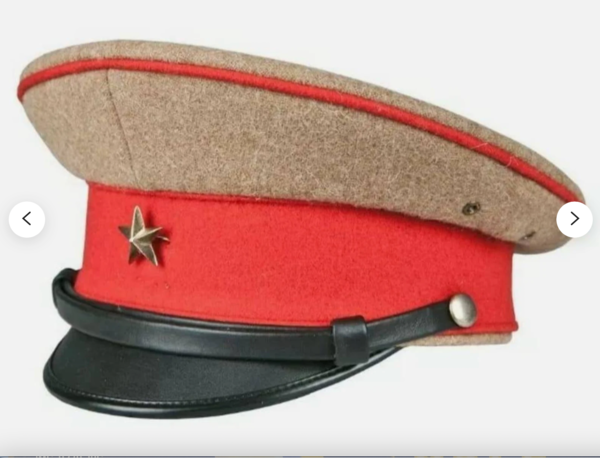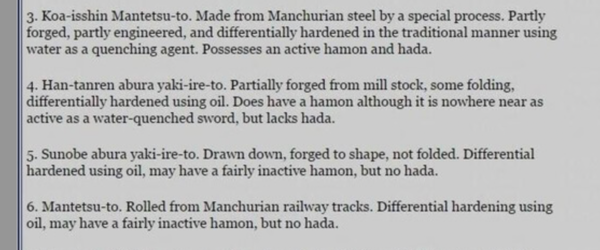
John C
Members-
Posts
2,221 -
Joined
-
Last visited
-
Days Won
15
Content Type
Profiles
Forums
Events
Store
Downloads
Gallery
Everything posted by John C
-
I'm not saying this is the case here. But in terms of textured paint, I have used this product in the past to get similar results. Not sure how long it has been around, though. John C.
-
Jacques: I'm really not trying to pile on here. But I, for one, am on this board to learn. If you have some knowledge, please share it without reservation. Thank you, John C.
-
-
I can't see the mei very well, however my research into the Nobuyoshi family suggests they had a variety of signature styles. In addition, there were several dozen smiths using the Nobuyoshi name from the 14th to the 19th centuries. I believe there was a Showa Nobuyoshi smith as well. Since the Nobuyoshi group were average smiths, they aren't faked that often. But Echizen, the younger brother of the 1st gen, was considered the better of the family and would probably be the one to fake if one were so inclined. Just my two cents. John C.
-
Notches in steel seems fairly elaborate when a pencil, paint, or chalk mark could accomplish the same goal far easier. Unless the marks need to be maintained through some quenching or washing process that would destroy other types of marks?? John C.
-
Mal: Just to add to the mix, isn't the tsuba a mid-war design? John C.
-
Jason: In terms of it being a type 98, I have some reservations with the fittings. The fuchi and the kabutogane do not have the standard sakura flowers and leaves design; the ito wrap looks a bit new to me; the mekugi do not seem to have the detail I would expect; and the sarute seems a bit long, as some reproductions I have seen. Now, this could be some other form of furniture I am not familiar with so I will let others discuss. Here is a link to what a typical type 94 or 98 would look like for reference. http://ohmura-study.net/905.html John C.
-
Thanks Dave. Reinforcing pieces makes a lot more sense. I couldn't figure out how it would be a template. John C.
-
A sword cane. But the "hamon" does not look authentic to me. Could be a reproduction. John C.
-
Likewise with the same crappy clipped nakago; clearly from the same factory. John C.
-
Has anyone seen these before or know anything about them? Not interested in buying; just curious. https://www.ebay.com/itm/255950787606?hash=item3b97db1416:g:atkAAOSw6DZj1ZP5&amdata=enc%3AAQAHAAAAsJtw4u3VjpBqpOGRCorDgFqKYJ%2FiEzER640IZRB4Vka1Kfcbiu6DLYkpF3k9%2F0INoX5a179WWm7lOvDEnPD%2Bk94bPY2W%2BsANQfS4le%2Bk4WOYlXo%2FRLPq20eCJAjXRlMIZLvuDzi%2BL%2BX7SGDNOMyNqX%2FXatoLJxZWiOSLjpDN%2BSsr8ERcf6FtB1fH0DyS%2FkoukK%2BL1qPFn4ABDIeDMCm9yHight0IfnVU6WGQdiobzv0F|tkp%3ABk9SR-bTtuXTYQ John C.
-
-
You can also get bone burnishers for leather working on Amazon. They come in different shapes. John C.
-
Really? Translated by well known Japanese swordsmith.
John C replied to Kiipu's topic in Military Swords of Japan
-
Yes. They are the exact same one. The masking tape on the saya and the scratches on the blade match up perfectly. That's how I noticed the cord wrap to begin with. John C.
-
I agree with some of you who have made a distinction between literacy and signing a mei. Just from personal experience, I have know MANY documented and undocumented aliens who could not read or write their own language but who had some of the most beautiful and elaborate signatures. John C.
-
Looks like the end of the nakago below the mekugi-ana has been welded on. Could the stamp have to do with a repair? John C.
-
Dan: I noticed the chart does not list priests. Where do they fall on that chart? In many cultures, priests could read and write when commoners could not. Weren't some swords made at shrines? Just spitballing at some possibilities. John C.
-
Attention Mantetsu Owners: A Survey
John C replied to Bruce Pennington's topic in Military Swords of Japan
@Bruce Pennington: Bruce: I’m trying to figure out the difference between number 3 and number 6 in the chart below in practical terms. Both Ohmura and Richard Stein note differences, however they do not provide examples. Do we have any examples of the differences between Koa Isshin and Mantetsu-to that we can look at? Thank you, From Ohmura: The sword which Mantetsu made is classifiable into the following three sorts. 1 The blade before being named "Kōa Issin". This blade has only Mantetsu's trademark stamp in a Tang. 2 A blade with "Kōa-Issin" Mei named the Kōa-Issin sword . 3 A blade with the stamp of the "Nan" of a Nanman Arsenal, and the stamp of "Ren" of a Nanman Arsenal Dalian factory. There is no Mei of "Kōa Issin" in this blade. The blade made in Nanman Arsenal from the middle of 1943 is seemed. The difference in these three sorts of blades is not known. From Richard Stein: Many swordsmiths were involved in the production of Mantetsu blades and used the "Koa Isshin Mantetsu" mei, hence it is important to judge each blade on its individual merits, not just on its signature. -
Attention Mantetsu Owners: A Survey
John C replied to Bruce Pennington's topic in Military Swords of Japan
Of courseThat's what I get for not paying attention in science class! BTW, the magnet did stick so I guess it's steel. Stuck to the bolts in my neck as well...not sure what that means, though. John C. -
Thomas: Thank you for the link. I noticed the Ashi on that saya is the same design as mine as well. Would it be worth trying to get the tsuka rewrapped by a professional or just leave alone? I know Bruce has some references. John C.
-
Attention Mantetsu Owners: A Survey
John C replied to Bruce Pennington's topic in Military Swords of Japan
Definitely metal covered wood. Feels a bit too heavy to be aluminum. There is a patch that is rusted more like a ferrous metal. Is there any way other than weight for me to tell? John C. -
Thomas: This picture illustrates why I believe the tsuka has been rewrapped (or I suppose replaced). The section on the right is the original condition. You can see the same and cord wrap with exposed chuso. The section on the left is the way it is now with the green ito covering the same and the chuso. John C.
-
Okay. Now I see what you mean (I think). The way the ito is tied around the ishizuki? John C.











